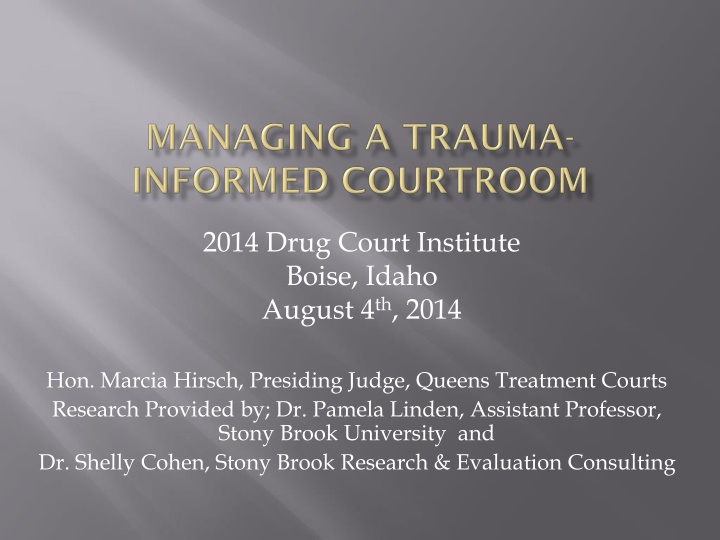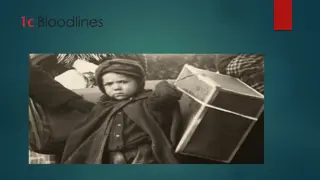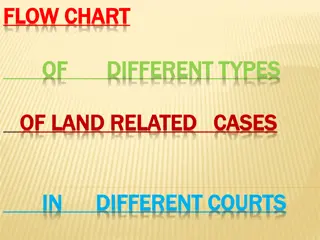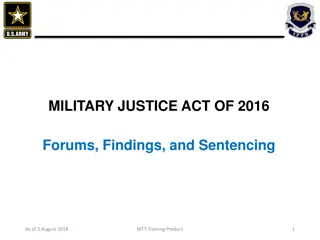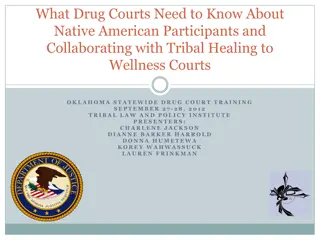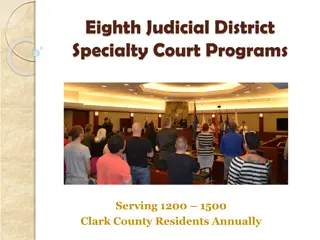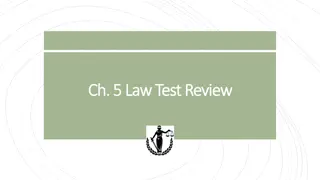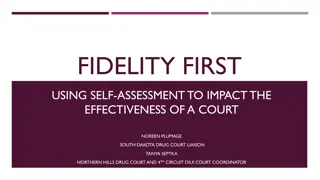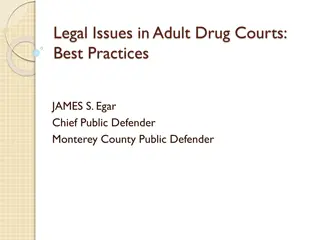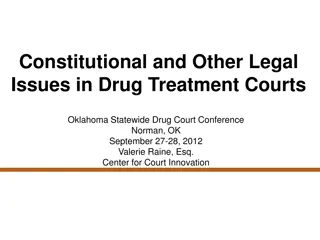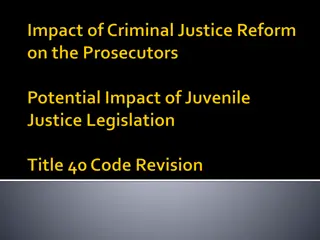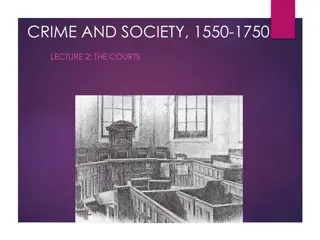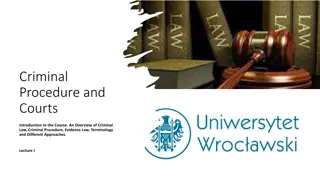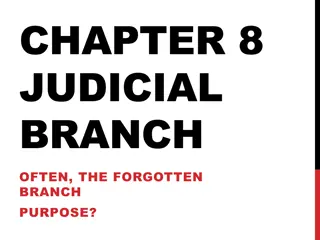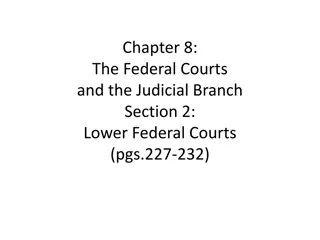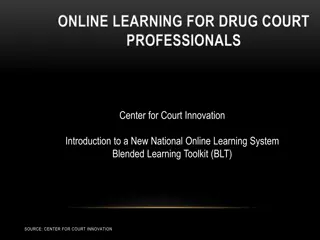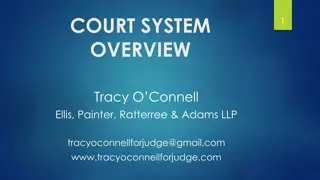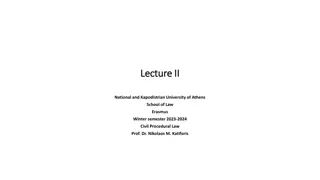2014 Drug Court Institute: Research and Evaluation in Queens Treatment Courts
The 2014 Drug Court Institute held in Boise, Idaho, under the guidance of Hon. Marcia Hirsch focused on research conducted by Dr. Pamela Linden and Dr. Shelly Cohen from Stony Brook University. The institute involved treatment court teams from five felony treatment courts in Queens, along with various agencies and organizations. Funded by a grant from the Center for Substance Abuse Treatment, the goals included enhanced screening, trauma-specific treatment services, and program evaluation. Discussions covered the importance of developing understanding, increasing awareness, recognizing signs, and learning appropriate responses to promote safety, reduce recidivism, and facilitate recovery from various traumatic experiences including physical abuse, loss, combat, community trauma, and more.
Download Presentation

Please find below an Image/Link to download the presentation.
The content on the website is provided AS IS for your information and personal use only. It may not be sold, licensed, or shared on other websites without obtaining consent from the author.If you encounter any issues during the download, it is possible that the publisher has removed the file from their server.
You are allowed to download the files provided on this website for personal or commercial use, subject to the condition that they are used lawfully. All files are the property of their respective owners.
The content on the website is provided AS IS for your information and personal use only. It may not be sold, licensed, or shared on other websites without obtaining consent from the author.
E N D
Presentation Transcript
2014 Drug Court Institute Boise, Idaho August 4th, 2014 Hon. Marcia Hirsch, Presiding Judge, Queens Treatment Courts Research Provided by; Dr. Pamela Linden, Assistant Professor, Stony Brook University and Dr. Shelly Cohen, Stony Brook Research & Evaluation Consulting
Treatment Court Teams Court staff from five felony treatment courts in Queens (QTC, QDWI, QMHC, QVTC, QDDC) Queens District Attorney s Office Defense Bar (Legal Aid, QLA, Private Attorneys) Queens TASC NYS Departments of Probation and Education & US Department of Veterans Affairs Treatment Agencies Samaritan Village, Inc Counseling Services of the Eastern District of New York Elmcor Youth and Adult Activities Program Evaluators Stony Brook Research & Evaluation Consulting, LLC *Special Thanks to Policy Research Associates
Funded by grant from the Center for Substance Abuse Treatment (CSAT) for three years from October 1, 2010 through September 30, 2013 Goals of QTP Provide enhanced screening and assessment of all participants in the five felony treatment courts in Queens County, NY (approximately 200/year) Provide trauma specific treatment services to participants that are identified as potentially benefitting from these services (approximately 40/year) Conduct evaluation of fidelity of implementation of program activities and success of activities in achieving intended outcomes
WHY? WHO? WHAT?
Develop understanding Increase awareness Recognize signs Learn how to respond
Increase safety Reduce recidivism Promote recovery (SAMHSA)
Physical abuse Loss Combat or victim of war Community trauma Sexual abuse Domestic violence Witness violence or other traumatic event Historical trauma Terrorism Natural Disaster (SAMHSA)
An event, experience, or effect Sudden event or long standing abuse (can be in the past or present) The event is terrifying, threatening, and overwhelming Impact is pervasive Is shapes the world view of the participant Individualized experiences Many people cope or heal while others get stuck
Court QTC (n=199) QDWI (n=113) QMHC (n=71) QVTC (n=36) QDDC (n=21) Mean Age (yrs) % white % black % Hispanic % Asian % male 28 36% 33% 43% 4% 87% 37 18% 19% 49% 14% 92% 37 40% 40% 18% 3% 79% 41 19% 65% 15% 0% 94% 35 35% 30% 35% 0% 81% % Employed F/T (Employed/school) % HS grad/GED 26% (55%) 68% 60% (78%) 75% 11% (38%) 63% 28% (46%) 100% 20% (40%) 62% % Priv Attorney % married % divorced % single % US Citizen 48% 71% 20% 36% 14% 14% 7% 78% 99% 45% 15% 40% 68% 16% 26% 58% 82% 28% 40% 32% 92% 14% 14% 71% 91%
Court QTC (n=199) QDWI (n=113) QMHC (n=71) QVTC (n=36) QDDC (n=21) Drug of Choice Alcohol Cocaine/Crack Heroin Marijuana Other CAGE (% 2+) 2 92 2 0 6 0 26% Data not available 33 25 8 21 13 38% 11 27 32 11 19 44% 15 11 53 19 13% % Prior AOD treatment 28% 27% 44% 76% % Ever abused 9% 5% 40% 29% % Ever homeless 10% 2% 43% 43% Criminal Charge % Drug Sale % Drug Possession % DWI % Other 30 64 0 6 0 2 13 9 1 77 19 17 22 42 29 33 0 38 97 2
Adverse Childhood Experiences (ACE) N=270 74% reported score of 0-2 13 % reported score of 3-4 13% reported score of 5 or more Trauma Symptom Checklist-40 (TSC-40) N=249 63% reported score of 0-30 20% reported score of 16-30 18% reported score of 31-97 PTSD Checklist-Civilian Version (PCL-C) N=50 32% reported score of 17-22 (no clinical concern) 28% reported score of 23-31 (symptoms of some clinical concern) 40% reported score of 32-57 (likely presence of PTSD) Impact of Events Scale (IES) N=45 76% reported score of 0-23 (no clinical concern) 13% reported score of 24-32 (symptoms of some clinical concern) 11% reported score of 33-76 (likely presence of PTSD) Trauma History Screen (THS) Not formally scored , but used to gather more details about traumatic events Combat Exposure Scale (CES) N=11 Administered only to Veterans
Combat Exposure Scale (n=11) 9% moderate-heavy 55% light-moderate 36% light-none Adverse Childhood Experiences (n=25) 36% ACE score of 5 or more items endorsed 20% ACE score of 3-4 items endorsed 44% ACE score of 0-2 items endorsed Current Trauma Symptoms 100% indicate likely presence of PTSD on PCL-C (n=5) 50% score 31+ on TSC-40 (n=24)
25 25 20 20 15 15 10 10 5 5 0 0 % graduate % fail % graduate % fail Low Symptoms Moderate High Low ACE Moderate High
20 30 18 25 16 14 20 12 10 15 8 10 6 4 5 2 0 0 % new arrest % warrant % new arrest % warrant Low Symptoms Moderate High Low ACE Moderate High
132 140 130 135 128 130 126 124 125 122 120 120 115 118 116 110 Phase 1 Phase 2 Phase 1 Phase 2 Low Symptoms Moderate High Low ACE Moderate High
Loss of close family member through death (16) or separation (2) Military Combat experience (3) Sexual abuse as a child or adult (5) Auto accident (4) Work accident with injury (1) Witness family violence (4) Natural Disaster/Hurricane (1) Witness stranger s death (1) Assault (2)
Three (3) Trauma Case Managers hired in three Queens County treatment agencies and trained in three trauma treatment group models: Trauma, Addictions, Mental Health and Recovery (TAMAR) Seeking Safety Helping Men Recover
The TAMAR Program is designed to educate and treat those who have a history of physical and/or sexual abuse and a recent treatment history for a mental health condition as well as an alcohol or drug use or abuse disorder. Structured, manualized 15-week intervention combining psycho-educational approaches with expressive therapies
Offers coping skills to help clients attain greater safety in their lives Highly flexible and can be used for group or individual format; women, men, and adolescents; all levels of care (e.g., outpatient, inpatient, residential); all types of trauma and substances; and any clinician. 25 treatment topics, each representing a safe coping skill relevant to both PTSD and SUD. Used broadly with clients who need improved coping skills; they do not have to meet criteria for PTSD and substance abuse as the skills can be generalized.
Helping Men Recover integrates a theory of addiction, a theory of trauma, and a theory of male psychosocial development. Program materials consist of a facilitator manual and a participant workbook 18 sessions in four modules: Module A: Self Module B: Relationships Module C: Sexuality Module D: Spirituality
Trauma services saved my life. I am very grateful for this experience. Though it has been difficult at times, I know it will better my life and my future. I was lost before and all this experience helped me improve my life and emotional issues that has led me to the wrong paths. I recommend it to those who really need it and would benefit from it. I enjoyed it.
A process of change through which individuals improve their health and wellness, live a self- directed life and strive to reach their full potential.
Hon. Marcia Hirsch, Presiding Judge mhirsch@nycourts.gov Dr. Shelly Cohen, Program Evaluator, Stony Brook Research & Evaluation Consulting, LLC scohen@notes.cc.sunysb.edu Dr. Pamela Linden, Evaluation Consultant , Stony Brook Research & Evaluation Consulting, LLC Pamela.Linden@stonybrook.edu
